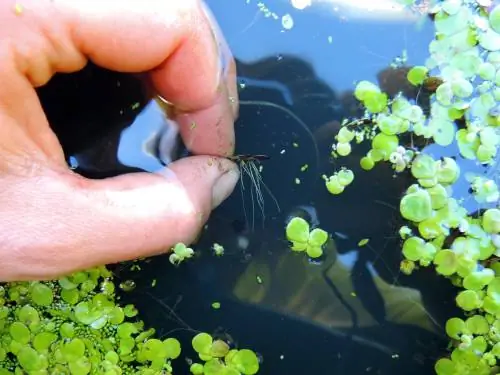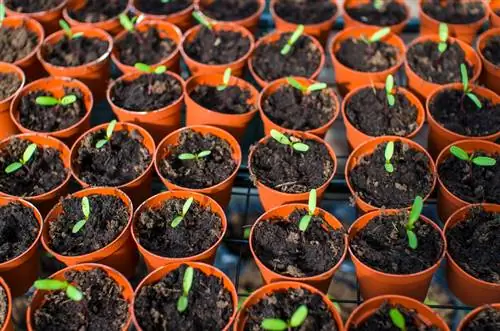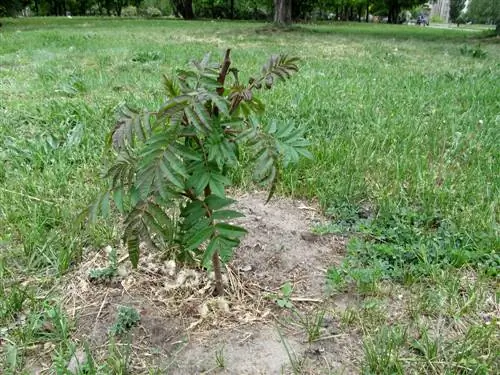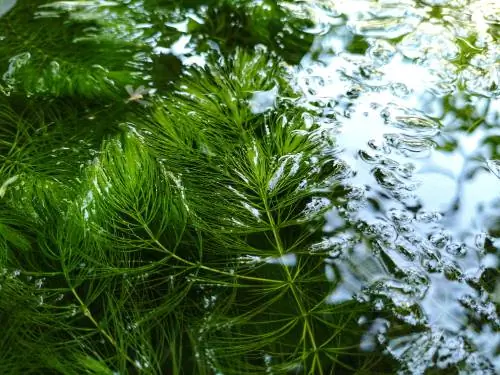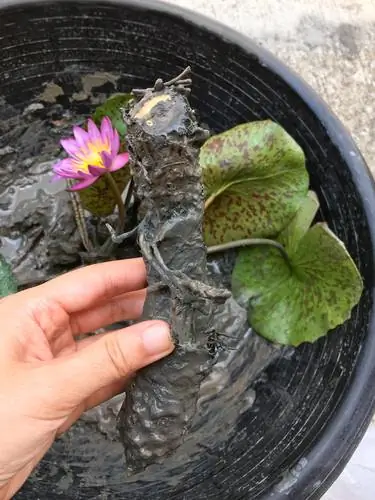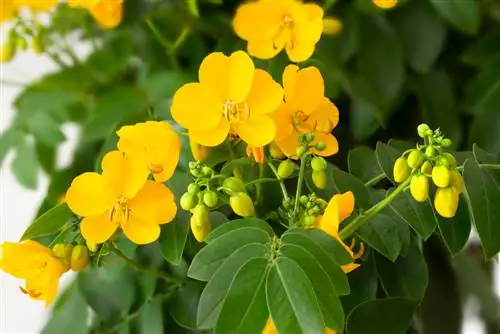- Author admin [email protected].
- Public 2023-12-16 16:46.
- Last modified 2025-01-23 11:21.
How you properly propagate aquatic plants depends on the specific species. In this guide you will learn about the different methods in detail.
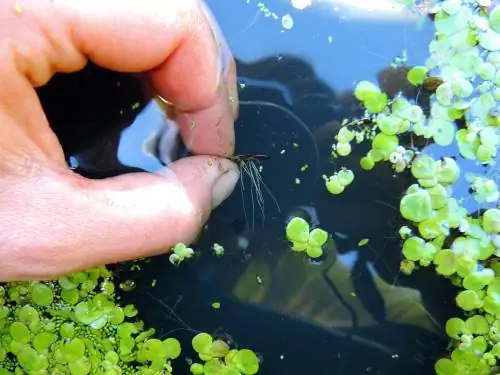
How can aquatic plants be propagated?
Aquatic plants can be propagated by various methods, such as seeds, dividing rootstocks or rhizomes, cuttings, or pulling the plants apart. The propagation method depends on the specific plant species. Vegetative propagation is usually preferred.
Preliminary remarks on propagation by seeds
Several swamp and aquatic plants can in principle be grown from seeds. However, this method is more time-consuming compared to vegetative propagation. In addition, some pond plants do not produce fruits or seeds under local climatic conditions. Therefore, if in doubt, you should prefer the vegetative variant(s).
Propagate water lilies and pond lilies
For sea/pond roses with rhizomes:
- Take the rootstock out of the plant basket and carefully remove soil and plant residue.
- Cut off old roots and shorten young roots so that they fit back into the plant basket.
- You can grow new plants from the eyes on the rootstock of the perennial. Cut out the bulbs with a knife and place them in a pot with moist clay soil. Press the eyes a few millimeters into the ground. Then place the pot in a larger container filled with water. Move the whole thing to a cool, partially shaded place.
- After about a month, the first shoots should already be visible.
- As soon as the young water lily plants are a few centimeters tall, they can be moved into a plant basket and thus into the pond.
Attention: Don't forget to put the mother plant back in its basket in the meantime.
For sea/pond roses that form rhizomes:
- Separate rhizome runners from the mother plant with a knife.
- Spread runners flat on the substrate in the pot.
- Cover with potting soil to such an extent that the vegetation points are just visible.
- Everything else follows the same pattern as with sea/pond roses with rhizomes.
Breeding other aquatic plants
The following sections briefly summarize how the cultivation of other aquatic plants works.
shore plants
With rhizomatous roots:
- Cut a 15 centimeter long piece from the rhizome tips.
- Remove dead leaves and brown roots.
- Insert rhizome runners into the soil.
With onion-like root tubers:
- Pull the rootstock apart.
- Cut off wilted leaves and brown roots.
- Short young, light roots to a few centimeters.
- Plant each section separately.
Completely Submerged Aquatic Plants
The easiest way to propagate here is via cuttings.
- Cut a ten centimeter long piece from each of the plant shoots.
- Place the cuttings in pots that are about five centimeters high filled with pond soil.
- Place pots in the bank area of the shallow water zone (garden pond) so deep in the water that the water level above the cuttings is around 15 to 20 centimeters high.
- Use small wooden sticks (€9.00 on Amazon) as supports until the roots form. This prevents the cuttings from being torn out of their pots by water buoyancy or a current.
- The water temperature should be above 15 degrees Celsius - this accelerates the rooting of the cuttings.
Floating plants
You can propagate native floating plants that are insensitive to frost in the fall. To do this, simply pull the rhizomes apart and then place them back on the water.
You must remove exotic floating plants from your garden pond during the autumn and winter months. Keep them indoors in a warm water aquarium. It is important to provide the aquarium and the plants with sufficient light. On the water surface, the floating plants form short runners on which new daughter plants develop. These often act very independently - they soon cut themselves off on their own initiative. Otherwise, you can carefully separate it from the mother plant and put it back in the water.

